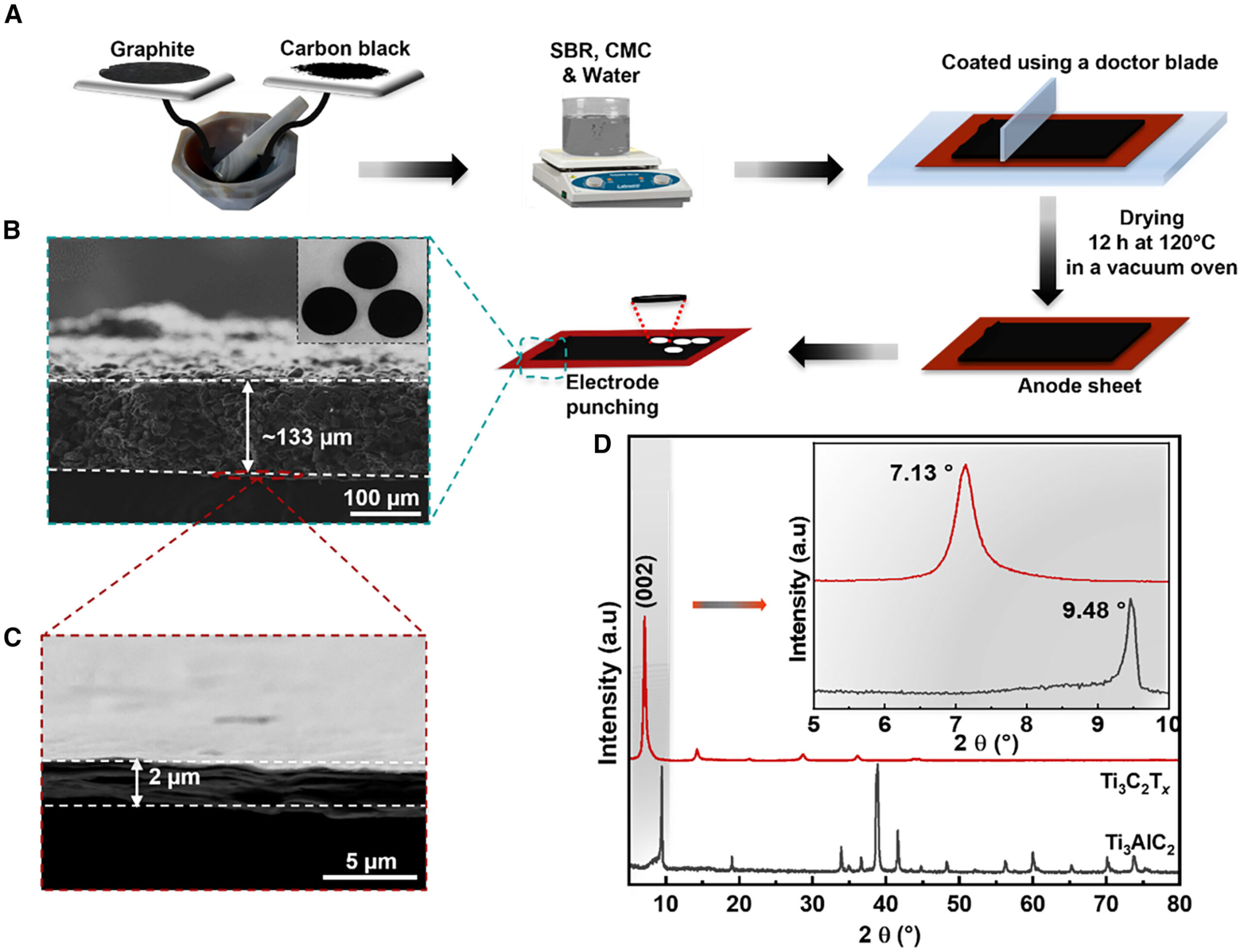Inovation
Revolutionizing Li-ion Batteries: The Impact of MXene Current Collectors on Size and Recyclability

The majority of electronic devices rely on lithium-ion batteries, which are continually evolving to be smaller, lighter, and more efficient. With each improvement, the batteries that power these devices are pushed to their limits in terms of size, weight, and performance.
Constant research is being conducted to explore new materials and methods for creating lightweight, high-performance components. MXene, a metallically conductive two-dimensional nanomaterial discovered by Drexel University researchers, has emerged as a promising candidate for current collector applications within batteries.
A recent study by Drexel researchers revealed that using an MXene film as a current collector could reduce battery weight and thickness while enhancing its capacity. Published in Cell Reports Physical Science, the research showed that MXene current collectors perform on par with copper foils in existing lithium-ion batteries, but are significantly thinner and lighter.
By incorporating MXene current collectors in battery components, overall weight from inactive materials can be reduced, allowing for greater utilization of energy-storing materials without adding extra weight, thereby improving battery capacity.
The study also demonstrated that MXene current collectors can be easily recycled for use in other batteries, a crucial step toward minimizing battery waste and preserving valuable resources.
Current collectors play a vital role in battery performance by directing the flow of electrons within the battery, facilitating the conversion of chemical energy to electrical current that powers electronic devices. They also contribute significantly to a battery’s weight, making up nearly 15% of its total weight.
“Recent advancements in battery technology focus on increasing capacity while reducing weight,” stated Yury Gogotsi, Ph.D., a prominent figure in Drexel’s College of Engineering and a leader in the research.
“The field recognizes the importance of finding recyclable alternatives for battery components to ensure sustainable manufacturing. Our findings indicate that MXene materials could be a strong contender for the batteries of tomorrow.”
MXenes have been extensively tested in various applications since their discovery at Drexel over a decade ago, including several in energy storage. Their suitability as current collectors stems from their exceptional electrical conductivity, flexibility, mechanical strength, and stability in corrosive environments. MXenes are also water-dispersible, simplifying the manufacturing process.
“The potential of MXenes to enhance next-generation batteries without significant design changes is a promising discovery, given their compatibility with a range of electrode materials,” noted Professor Patrice Simon, Ph.D., a co-author from Université de Toulouse in France.
The final phase of the research focused on assessing the cycling stability and recyclability of MXene current collectors. After eight weeks of continuous charge and discharge cycles, the MXene-graphite electrode maintained its integrity, with the graphite active material evenly distributed and adhered to the MXene film.
The layered structure of the MXene current collector remained intact without any degradation. Through a simple and eco-friendly recycling process developed by the team, the electrode was disassembled and reconstructed using reclaimed materials for the current collector. Electrochemical tests confirmed that its performance remained unchanged.
“As battery materials become scarcer and sustainability gains importance, designing components for reuse is essential,” emphasized Yuan Zhang, Ph.D., a post-doctoral researcher in Gogotsi’s lab and a co-author of the study.
“Due to their exceptional electrochemical durability, MXenes can be recycled without compromising their outstanding properties.”
The research was spearheaded by Sokhna Dieng, a Schlumberger Future Fellow in Gogotsi’s lab, who contributed to the study as part of her doctoral research. Her future work will focus on exploring MXenes as conductive additives and passive components in batteries to enhance performance and safety by preventing dendrite growth.
“We envision batteries incorporating MXene components to be used in wearable electronics and portable devices where size and weight are critical and material usage is minimal,” Gogotsi commented.
“They also hold potential for applications where low weight is essential, such as drones or other aerial vehicles.”
More information:
Sokhna Dieng et al, MXene current collectors for recyclable batteries with improved capacity, Cell Reports Physical Science (2025). DOI: 10.1016/j.xcrp.2025.102874
Citation:
MXene current collectors could reduce size and improve recyclability of Li-ion batteries (2025, October 13)
retrieved 13 October 2025
from https://techxplore.com/news/2025-10-mxene-current-collectors-size-recyclability.html
This document is subject to copyright. Apart from any fair dealing for the purpose of private study or research, no
part may be reproduced without the written permission. The content is provided for information purposes only.
-

 Video Games2 days ago
Video Games2 days agoTekken 8: Rise of the Shadows
-

 Video Games1 day ago
Video Games1 day agoGoku Takes on the Dragon Ball FighterZ Arena
-

 Amazon2 days ago
Amazon2 days agoNeil Young Takes a Stand: Pulling Music from Amazon in Protest of Jeff Bezos’ Support for Trump
-

 Tech News2 days ago
Tech News2 days agoSamsung Galaxy UI 8: Embracing the Big Free AI Upgrade
-

 Security2 days ago
Security2 days agoCritical Vulnerability Exposed: Oracle EBS Targeted in Recent Cyber Attacks by Cl0p Hackers
-

 Apple2 days ago
Apple2 days agoExploring the Dystopian Realms of Pluribus: An Apple Original Series Trailer
-

 Microsoft2 days ago
Microsoft2 days agoEnhanced Copilot Features: Creating Office Documents and Gmail Integration
-

 AI23 hours ago
AI23 hours agoOracle’s Next-Gen Enterprise AI Services Powered by NVIDIA’s Cutting-Edge GPUs






























